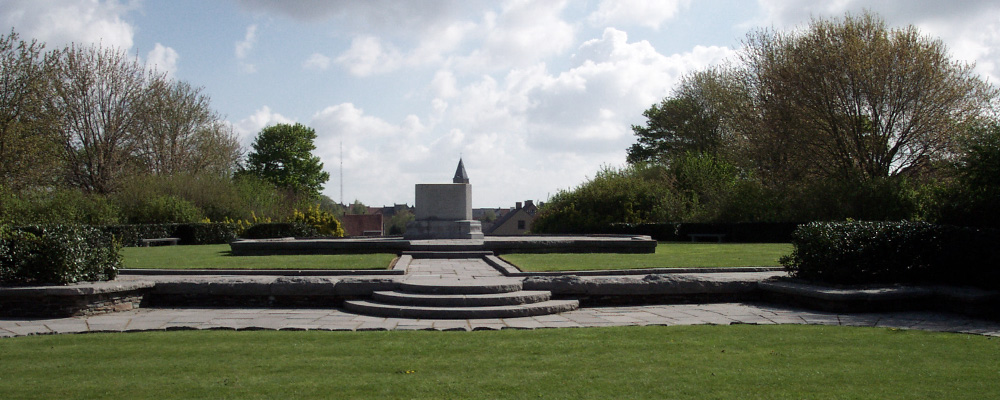The Passchendaele Canadian Memorial commemorates the actions and sacrifices of the Canadian Corps during the First World War’s Battle of Passchendaele.

A war-torn place
The village of Passchendaele (now Passendale) and surrounding area were associated with every phase of the First World War. In the middle of October 1914, Passchendaele was briefly under Allied control but by 20 October it was in German hands, where it remained for the next three years. On 6 November 1917, after the severest fighting in most unfavourable weather, the 5th Canadian Infantry Brigade took, and passed, the village; this fight was part of the Second Battle of Passchendaele, the last of the Battles of Ypres, 1917.
Honouring their sacrifice
On the slopes overlooking the peaceful fields that today carpet the valley of the Ravebeek, the Passchendaele Canadian Memorial marks the site of Crest Farm, where Canadian soldiers encountered some of the fiercest resistance they were to meet during the war. The 4th Canadian Division captured this objective during the assault of 30 October 1917.
A memorial among the maples
A large block of Canadian granite set in a grove of maple trees and encircled with a low hedge of holly carries the inscription:
THE CANADIAN CORPS IN OCT.- NOV. 1917 ADVANCED ACROSS THIS VALLEY - THEN A TREACHEROUS MORASS - CAPTURED AND HELD THE PASSCHENDAELE RIDGE
From the centre of the memorial grounds one can see, down a long avenue of trees, the rebuilt spires of Ypres.
Related cemeteries and memorials
The New British Cemetery was made after the Armistice when graves were brought in from the battlefields of Passchendaele and Langemarck. Almost all of the burials are from the autumn of 1917. The cemetery now contains 2,101 burials and commemorations of the First World War. 1,600 of the graves are unidentified, but there are special memorials to seven casualties believed to be buried among them. The cemetery was designed by Charles Holden.
Learn more about all eight Battlefield Memorials of the First World War